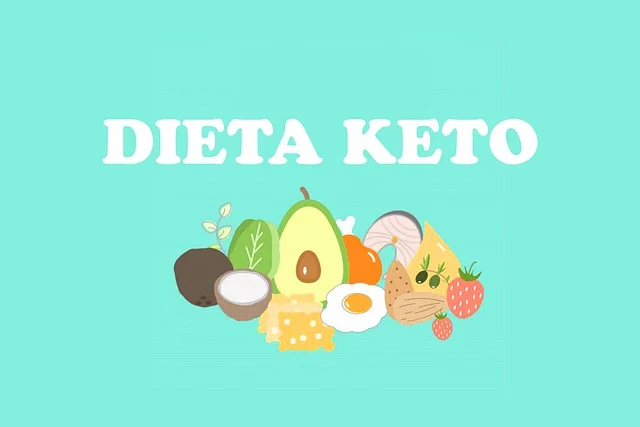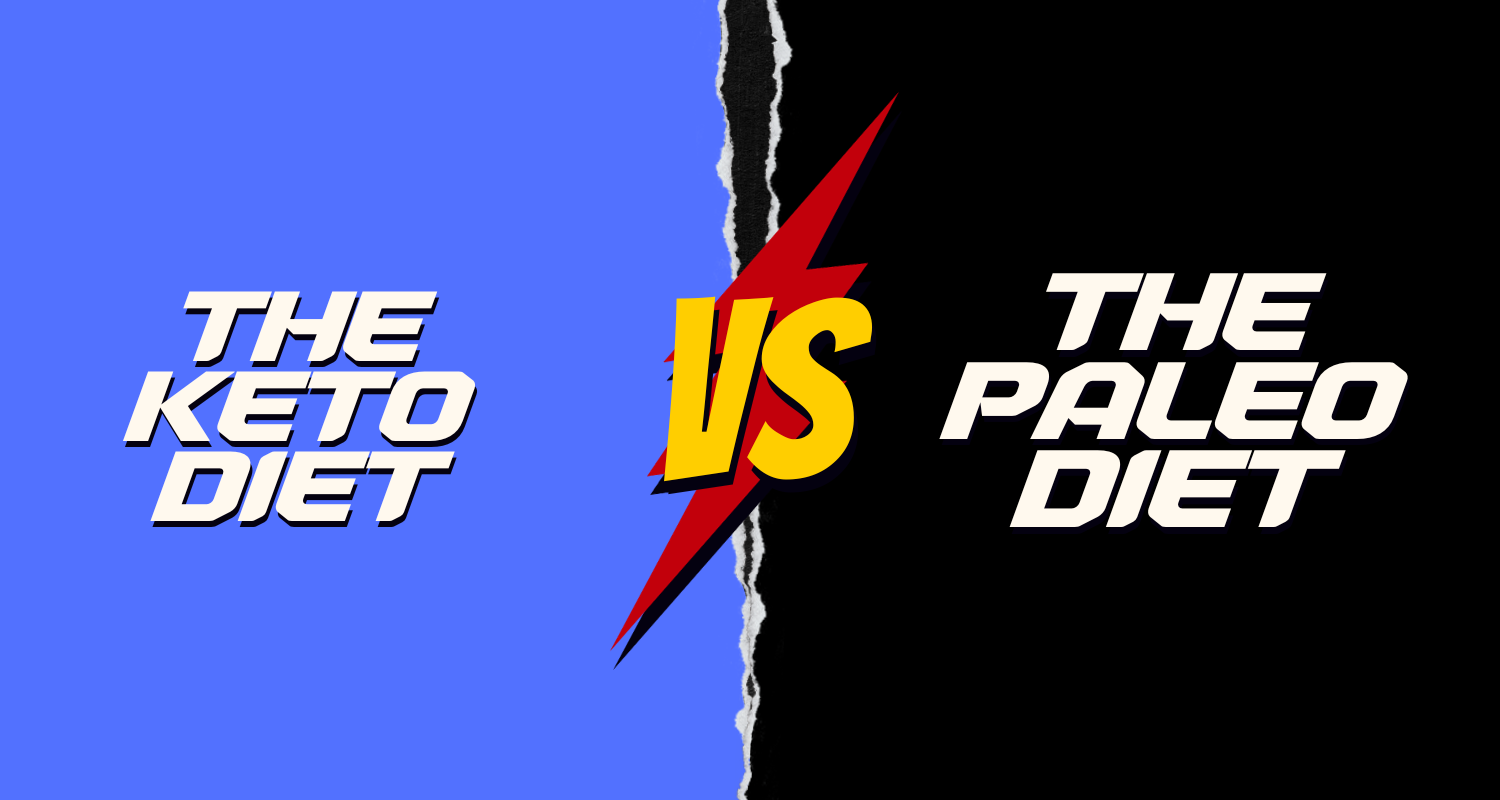INTRODUCTION
In the steadily advancing universe of diets , two famous methodologies definitely stand out lately. The ketogenic diet (keto) and the paleolithic eating routine (paleo). These dietary systems have caught the creative mind of numerous wellbeing-cognizant people looking for weight reduction, further developed well-being, and upgraded imperativeness. In this complete examination, we’ll dig into the standards, benefits, likely downsides, and logical groundwork of both the keto and paleo diets to assist you with settling on an educated decision about which one might be appropriate for you.
PART 1: UNDERSTANDING KETO

WHAT IS THE KETO DIET?
The ketogenic diet, generally known as the keto diet, is a low-starch, high-fat dietary methodology intended to move the body’s digestion into a state called ketosis. Ketosis happens when the body fundamentally involves fat for energy rather than carbs. This dietary technique is portrayed by unambiguous macronutrient proportions:
1) HIGH FAT:
Roughly 70-80% of everyday calorie admission comes from fats. These fats can emerge out of sources like avocados, nuts, seeds, oils (like olive oil and coconut oil), spread, and greasy cuts of meat.
2) LOW CARBS:
Sugar admission is essentially limited, regularly representing just 5-10% of everyday calories. This implies limiting or killing food varieties like bread, pasta, rice, sweet tidbits, and most natural products.
3) MODERATE PROTEIN:
Protein admission is moderate, making up around 10-20% of everyday calories. Wellspring of protein on the keto diet might incorporate lean meats, fish, eggs, and dairy items.
The essential objective of the keto diet is to prompt and keep a condition of ketosis, where the body separates away fat into particles called ketones. Which are utilized as an elective fuel source rather than glucose (sugar). Ketosis is accepted to advance weight reduction by consuming fat all the more effectively.
While the keto diet has acquired ubiquity for its capability to assist with weight reduction and further develop glucose control. It additionally accompanies difficulties. The severe restriction of starches can prompt starting aftereffects known as “keto influenza,” which might incorporate exhaustion, cerebral pains, and peevishness. Also, keeping up with the eating regimen can be trying because of the restricted food decisions, and it might come up short on fundamental supplements while perhaps not painstakingly arranged.
Individuals keen on attempting the keto diet ought to talk with a medical services supplier or enlisted dietitian to guarantee. It lines up with their well-being objectives and to get customized direction on the best way to securely execute and keep up with the eating routine.
BENEFITS OF KETO
1. WEIGHT REDUCTION
One of the main draws of the keto diet is its viability in advancing weight reduction. At the point when the body enters a condition of ketosis, it consumes put away fat for energy, prompting huge decreases in muscle to fat ratio.
2. FURTHER DEVELOPED GLUCOSE CONTROL
Keto counts calories have been displayed to assist with settling glucose levels, making them a possible decision for people with type 2 diabetes or those in danger of developing the condition.
3. UPGRADED MENTAL LUCIDITY
A few defenders of the keto diet guarantee that it can prompt superior mental lucidity and concentration, perhaps because of the consistent stock of energy given by ketones.
4. POTENTIAL FOR EPILEPSY THE BOARD
Keto eats less carbs have been utilized for a really long time as a helpful methodology for drug-safe epilepsy, especially in kids.
If you are interested in starting a Keto Diet you may like to read the post on how to get into ketosis in 24 hours.
CHALLENGES OF KETO
1. Starting Aftereffects
The change into ketosis can be tested, frequently joined by side effects known as the “keto influenza,” which might incorporate weakness, migraines, and touchiness.
2. Dietary Limitation
The severe limit of starch-rich food sources can make the keto diet testing stick to, particularly in group environments.
3. Expected Dietary Lacks
Keto diets might miss the mark on supplements like fiber, few nutrients and minerals. Which can present long-haul well-being gambles while possibly not appropriately made due.

PART 2: EXPLORING PALEO

WHAT IS THE PALEO DIET?
The Paleolithic eating regimen, normally known as the Paleo diet is a dietary methodology. It looks to emulate the dietary patterns of our old agrarian precursors from the Paleolithic time. The center standard of paleo diet is to devour food varieties that would have been accessible to our far-off precursors. Here are the critical highlights of the paleo diet:
1) ENTIRE, NATURAL FOOD SOURCES:
The paleo diet accentuates the utilization of entire, regular food sources that have gone through insignificant handling. This incorporates lean meats, fish, poultry, organic products, vegetables, nuts, and seeds.
2) AVOIDANCE OF HANDLED FOOD SOURCES:
Food sources that are a consequence of present-day horticultural practices and food handling are normally rejected from the paleo diet. This incorporates grains (like wheat, rice, and oats), dairy items (aside from certain translations of the eating regimen that permit restricted dairy), refined sugars, and handled oils.
3) LEAN PROTEINS:
A huge piece of the eating routine comprises lean wellsprings of protein, for example, grass-took care of meat, wild-got fish, and free-roaming poultry.
4) PRODUCTS OF THE SOIL:
Non-dull leafy foods are supported, as they give fundamental nutrients, minerals, and fiber.
The paleo diet is frequently connected with a few likely advantages, including further developed processing, weight the board, and a decrease in handled food utilization. It might likewise be reasonable for people with explicit dietary limitations, for example, the individuals who are lactose bigoted or have gluten awarenesses, as dairy and grains are confined to the eating routine.
Be that as it may, there are reactions and discussions encompassing the authentic exactness of the paleo diet and whether it precisely mirrors the weight control plans of our old precursors. Also, the prohibition of specific nutritional categories can raise worries about expected wholesome lacks, especially in calcium and vitamin D.
Prior to beginning the paleo diet or some other dietary routine, it’s fundamental to talk with a medical care supplier or enlisted dietitian to guarantee it lines up with your well-being objectives and to get customized direction on the most proficient method to carry out and keep up with the eating regimen securely and really.
BENEFITS OF PALEO
1. SUPPLEMENT THICK FOOD VARIETIES
The paleo diet advances supplement thick food varieties, for example, lean meats and new produce, which can give fundamental nutrients and minerals.
2. FURTHER DEVELOPED ASSIMILATION
Numerous people report further developed assimilation and decreased gastrointestinal issues on the paleo diet, possible because of the aversion of handled food sources and grains.
3. WEIGHT THE EXECUTIVES
By zeroing in on entire food varieties and killing handled things, the paleo diet can uphold weight reduction and weight the executives.
4. ALLERGEN END
For those with food-responsive qualities or sensitivities, the paleo diet’s rejection of normal allergens like dairy and gluten can be useful.
CHALLENGES OF PALEO
1. ABSENCE OF ENTIRE GRAINS
The paleo diet prohibits entire grains, which are a huge wellspring of dietary fiber and certain fundamental supplements.
2. RESTRICTED DAIRY
Dairy items are likewise beyond reach on the paleo diet, which might prompt expected calcium and vitamin D insufficiencies.
3. NOT IRREFUTABLE
Pundits contend that the paleo diet’s endeavor to copy the eating regimen of ancient people depends on defective presumptions about their genuine dietary patterns.

PART 3: SCIENTIFIC UNDERPINNINGS
THE SCIENCE BEHIND KETO
Keto’s essential system rotates around ketosis, where the liver produces ketone bodies from fat, which then, at that point, act as an elective energy source when carbs are scant. Research upholds its adequacy for weight reduction, glucose control, and epilepsy on the board.
THE SCIENCE BEHIND PALEO
The paleo diet’s accentuation on entire food varieties and the aversion to handling things line up with standards of good dieting. Notwithstanding, a few pundits contend that the eating routine’s verifiable precision is problematic, and more exploration is expected to lay out its drawn-out wellbeing impacts decisively.
PART 4: CHOOSING THE RIGHT DIET FOR YOU
While thinking about whether keto or paleo is the right dietary decision for you, a few elements ought to be considered:
1. Wellbeing Objectives
Your essential well-being objectives play a huge part in choosing an eating routine. Assuming you’re searching for quick weight reduction or glucose control, keto might be more reasonable. Be that as it may, on the off chance that you focus on generally speaking well-being and processing, paleo may be a superior fit.
2. Way of life
Consider your way of life and how well a specific eating regimen lines up with it. Keto’s severe carb constraints can be trying in friendly circumstances, while paleo’s emphasis on entire food sources might be more sensible.
3. Dietary Inclinations
Individual dietary inclinations and limitations ought to likewise be thought of. Assuming that you’re lactose narrow minded or have gluten responsive qualities, paleo’s avoidance of these things might pursue.
4. Long haul Supportability
Both keto and paleo can be powerful temporarily, yet long-haul manageability is pivotal. Contemplate which diet you can practically keep up with over the long haul.
5. Counsel an Expert
Prior to beginning any new eating routine, it’s prudent to talk with a medical services supplier or enlisted dietitian who can survey your singular necessities and give customized direction.

CONCLUSION
In the continuous keto versus paleo banter, there’s nobody size-fits-all response. The two weight control plans offer interesting advantages and difficulties, pursuing the decision on an issue of individual inclination, wellbeing objectives, and way of life. It’s crucial to approach dietary changes with watchfulness and look for proficient direction when important. Recollect that a decent, entire food sources-based diet is the groundwork of good well-being, and individualized decisions ought to line up with your particular necessities and values. At last, the best eating regimen is one that you can maintain, and appreciate, and that upholds your general prosperity.
FAQs
The paleo keto diet depends on creature fat and protein utilization. It joins parts of the paleo diet, which copies the food varieties of our progenitors. The ketogenic diet, is an exceptionally low-starch diet. The emphasis is on eating nutritious, regular food varieties with a large part of the energy coming from creature items
Stringently talking, the Paleo diet is without gluten. However isn’t really keto amicable on the grounds that high sugar content in many natural products, maple syrup, honey and higher carb vegetables are important for the Paleo way of life.
Sugars like erythritol, xylitol, priest natural product, and yacon syrup can without much of a stretch fit into a low-carb or ketogenic diet. Nonetheless, you might have to restrict your admission of different sugars high in carbs, sugar on a low-carb diet.

